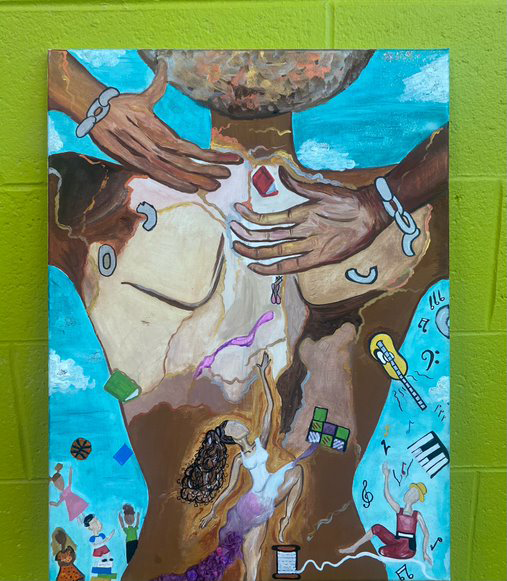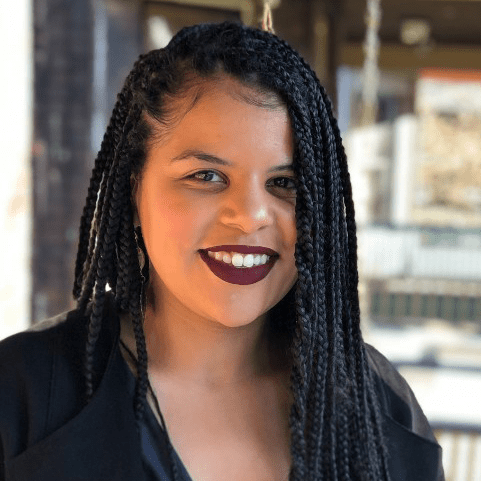
Blog
Work held in good hands
We cannot ignore the impact that violence has on our Detroit communities. It affects many aspects of our lives—from metal detectors and security guards in public places (including schools) to the comfort one has walking the streets. But we also cannot ignore the people working diligently to ensure our communities are safe, welcoming, and vibrant.

Crime incidents and statistics are shared constantly in the news. Seldom are the root causes of violence included in the story, nor are the people and organizations working to heal them. People are working within their communities and across the city to think about and tackle crime. They are also considering why it is happening and what can change it.
I had the honor of attending a Listening Tour session with Angelique Power with leaders in community violence reduction. Participants had backgrounds in social work, education, youth development, grassroots organizing, community development, and survivors of violent crime.
The session brought hard truths and gleaming opportunities to light.
Root causes
During the session, the impossibility of defining where community violence stems from became evident, but almost everyone agreed that it comes from the breakdown of the community itself. The leaders in the room discussed collective community trauma. They expressed that the state of the community itself is a precursor and often the first suggestion that an individual will be subject to a cycle of violence.
Someone at the table expressed, “Community violence is a response to institutional violence.”
Both poverty and the societal response (or lack thereof) to it is related to institutional violence. There is a breakdown of investment in basic needs like grocery stores, health, and public education. There are a lack of community aspects, like having things to do and places to connect with neighbors. Layer this with systemic problems and racialized policies, institutions that should provide safety for residents, like schools and law enforcement, turn into institutions that have caused trauma.
The cycle of crime is not a new concept. However, it became clear from this listening session that the response to community violence may also hold gaps where people are left behind, turned away, and forgotten, therefore contributing more to the problem.
Violence prevention systems
A “one-size-fits-all” program is not the solution to community violence. Detroit has unique qualities, problems, solutions—and fortunately—a unique web of leaders, practitioners, allies, and public servants who are passionate enough to help chip away at the triggers of community violence.
The listening session gave space for the people doing the work. Their relentless commitment is to pick up the pieces and find ways into systems to intervene and improve. For example, nonprofits are a major support to schools and social service agencies, guide parents and families of youth victims and perpetrators, help police departments use restorative justice for young offenders, and advocate for changes in practices and policies.
The limitations of these programs and systems became evident as the conversation progressed. Though nonprofits can enhance the community in many ways, sometimes challenges can harm those who get served. Red tape and a lack of resources and capacity may prevent some from participating in these vital programs. Most of these issues stem from a lack of funding or an inability to build capacity. Many of those who come to nonprofits for help do not see this side of things. It is easy for this to result in another door being closed.
It became clear that real-life experience is needed to guide the work. Many nonprofit board members, leaders, and supporters have never experienced the trauma that leads to community violence for themselves. Most work gets driven by academic studies though the real experts are those who lived it or are still living it. They are the ones who know what works and what does not. They are the ones who are not afraid to do the real work. They are in a place to be an accessible resource and changemaker. They are the ones who can identify the cracks in the system because they have real-world experience, as well as identify those who need help the most.
Philanthropy’s role in safe communities
We talked about hard truths about a system steered through philanthropic dollars. It uncovered some results typically swept under the rug of impact reports and grant requests. Funding aside, foundations can help guide the work in a better direction with the leverage they hold. Some of the main areas for growth that echoed through the session are as follows:
- Address diversity in the nonprofit industry. Youth voice is crucial for the trajectory of Detroit. Youth must be present in the decision-making. Having first-hand experience in the problems you are trying to solve may be of higher value than a degree or a certificate. Organizations must nurture the development of young people and make their experiences beneficial.
- Allowing for more access. Ensure the services and programs that are supported are accessible to those that are in need. Services need to meet people where they are—both geographically and on a level of accessibility. Removing red tape and barriers means more people can utilize vital services in communities.
- Encourage natural partnerships. Nonprofits must function through organic synergies instead of forcing an ecosystem with tensions, inconsistencies, and disjointedness. Naturally formed partnerships are keys to a thriving network. This natural selection process is critical to identify systems that work and should be further supported.
This session provided a lot of truths that I continue to mull over. As I sit with these thoughts, I am overwhelmed with all the work left. Still, I find it refreshing and cathartic to hear the honesty and passion of these violence prevention leaders. We need more conversations like this to move this work forward, and it is relieving to know that the work is in good hands—full of knowledge, experience, and love.
